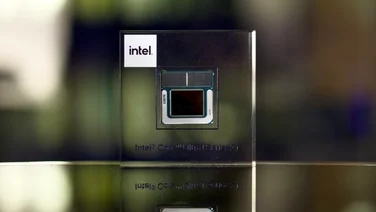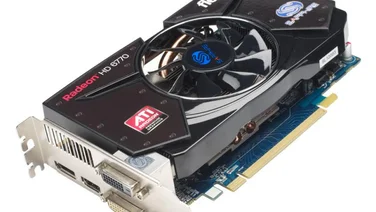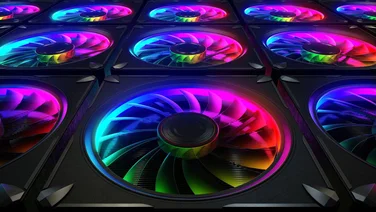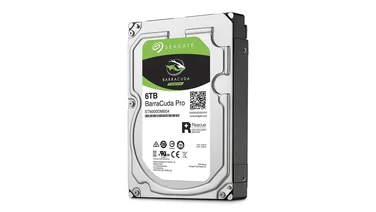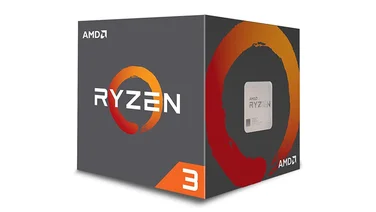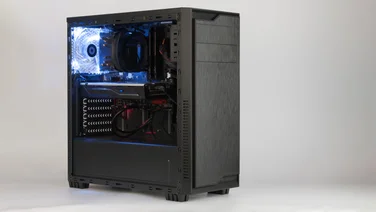To help us provide you with free impartial advice, we may earn a commission if you buy through links on our site. Learn more

Last year, Qualcomm shook-up the laptop world by introducing the first mobile-processor-based laptops but, despite early promise, it took a while before we got our hands on one to test. We liked the HP Envy x2 (Snapdragon) but it did have its limitations and it was quite expensive. Today, Qualcomm is aiming to take Windows-based Snapdragon-powered laptops to the next level with the introduction of the Snapdragon 8cx.
The new chip aims to offer a similar set of features as the Snapdragon 835 from the HP Envy x2 last year and the laptop-specific Snapdragon 850, introduced earlier in 2018. This time, however, it’s upping the power and capabilities of the chip significantly in a bid to address the previous generations’ lack of oomph. And it’s promising better battery life, too, thanks to the chip’s 7nm manufacturing process. Indeed, with Intel still stuck on 14nm, this is the first ever 7nm laptop chip. The times, they are a changing.
READ NEXT: Qualcomm Snapdragon 855 preview – your next flagship smartphone is going to be a beast
Qualcomm 8cx preview: Specifications
- Octa-core Kryo 495 CPU; Adreno 680 GPU; Hexagon 690 DSP; Spectra 390 ISP
- 7nm process technology
- NVMe SSD and LPDDR4x RAM support
- USB Type-C (USB 3.1) support
- 2x External 4K HDR monitor support
- X24 4G connectivity with up to 2Gbits/sec download speed
- 5G ready
- GPS, Bluetooth 5,
- Windows 10 Enterprise and DirectX 12 support
Qualcomm 8cx preview: Key features
Snapdragon 8cx laptops will still be “always on, always connected”, so they’ll have 4G connectivity at up to 2Gbits/sec courtesy of the Snapdragon X24 modem. Like the original 835-based Snapdragon laptops, they’ll be fanless and they’ll behave exactly like a giant smartphone, receiving messages and issuing notification alerts even while in standby.
In fact, under the skin, the Snapdragon 8cx is similar in makeup to the smartphone-specific Snapdragon 855. It’s made up of an octa-core Kryo 495 CPU, an Adreno 680 GPU and a Hexagon 690 DSP (digital signal processor), just like the smartphone chip. And, just like the 855, Qualcomm is promising laptop users significant performance and efficiency gains over both the Snapdragon 835 and 850, particularly for gamers.
The Snapdragon 8cx has “double” the GPU performance of the Snapdragon 850 and 3.5x the GPU performance of the 835. And that GPU is a claimed 60% more efficient than before, delivering the most performance per watt of any GPU that the firm has yet made.

Qualcomm also made performance comparisons between the Snapdragon 8cx’s Kryo 495 CPU versus an unspecified 15W competitor. This is an oblique reference to what is almost certainly a U-series Intel Core i5, the chip seen in most ultra-light laptops around the £1,000 to £1,500 mark. At 15W, Qualcomm claims the 8cx is comparable to this chip while at 7W it’s twice as fast.
Perhaps more significant than all this, however, is the collection of laptop-centric features the 8cx will support. There’s support for high-speed NVMe SSDs, so big apps should launch just as quickly as they do on Intel-powered ultraportables. There’s also USB Type-C (USB 3.1) support so you’ll be able to connect high-speed external storage and you’ll also be able to hook up external monitors: up to two 4K HDR screens, to be precise.

One of the big hurdles for Snapdragon-powered laptops so far, however, has been software and those limitations have partly been resolved here and with the 8cx’s ability to run Windows 10 Enterprise, Snapdragon laptops will now be an option for mass, enterprise-level rollouts. Laptops with the 8cx inside should also be able to run 64-bit apps, but since Microsoft has only recently given developers the tools to produce 64-bit apps for Snapdragon laptops, those will take some time to come on stream.
But Qualcomm is beginning to kickstart work on native apps and has been working diligently at least the browser side of this knotty problem and it showed off fully working versions of both the Chromium and Firefox browsers working in native ARM64 code. Most other apps from outside the Windows app store will still need to run with the help of an extra layer of software translating the code for the Snapdragon chip but, as demonstrated by Qualcomm at the launch event, the extra power of the 8cx should help apps run in this way to feel more snappy and responsive than they did before.
Qualcomm Snapdragon 8cx preview: Early verdict
That’s all good news, but despite showing off the new Snapdragon 8cx chip running on demo devices there weren’t any commercial designs unveiled at the launch. That’s more than a touch disappointing. Qualcomm did wheel out Lenovo spokesman Matt Bereda to talk about the new chip, though, so expect new machines from Lenovo fairly soon. I’d expect launches at CES 2019, so you shouldn’t have too long to wait.
Whether or not laptops running Snapdragon chips will actually take off, however, remains to be seen. In theory, they’re a great idea. The promise of increased battery life, always-on connectivity and comparable power to an Intel Core i5-based machine are all enticing, to be sure. And the ability to run Windows 10 Enterprise means big firms will now be able to equip their employees with such machines as well.
But Snapdragon laptops will need to be priced at a lower level than the devices we’ve seen so far to entice customers to buy them. They’ll need to be quicker and more reliable than the first generation of Snapdragon laptops and they’ll need to be able to run all Windows apps as well. We won’t know whether all these issues have been resolved, though, until we have product in our hands and that’s unlikely to be earlier than Summer 2019.

